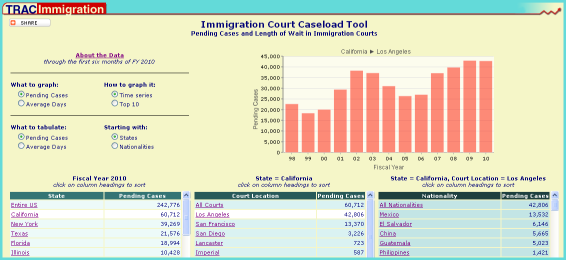
Figure 1. Immigration Court Backlog Click for larger image. |
The number of cases awaiting resolution before the Immigration Courts reached a new all-time high of 242,776 at the end of March 2010, according to very timely government enforcement data obtained by the Transactional Records Access Clearinghouse (TRAC). The case backlog has continued to grow — up 6.3 percent — since TRAC's last report four months ago, and nearly a third higher (30.4%) than levels a mere 18 months ago (see Figure 1).
Wait times have also continued to inch upward. The average time these pending cases have been waiting in the Immigration Courts of the Executive Office for Immigration Review (EOIR) is now 443 days.
Full details — by state, nationality, Immigration Court and hearing locations — can be viewed in TRAC's backlog application, now updated with data through March 2010.

Figure 2. TRAC's Immigration Court Caseload Tool. (click to use the tool) For comparisons with TRAC's earlier reports examining the volume of cases, wait times, and how these compare with the current number of Immigration Judges available to handle this growing caseload see March 2010, June 2009 and July 2008 reports. |
Selected Highlights
Wait Times by State
Wait times continue to be longest in California with 627 days, up from 619 days four months ago. Massachusetts average wait times inched up from 612 days to 616 days over the same time period. Nebraska moved up to third place, with an average time of 513 days pending cases have been waiting in the Omaha Immigration Court — up from 498 days four months ago.
Wait Times by Nationality
Among nationalities, and limiting comparisons to the 50 countries with the most individuals in queue, Armenians with cases pending before the Immigration Courts currently had the longest wait times of 938 days — more than twice the national average of 443 days. Other nationalities within the top five in terms of the length their cases had been pending were Indonesia (731 days), Lebanon (688 days), Albania (830 days), and Iran (594 days).
Highest Growth Rates in Pending Cases
Among individual Immigration Courts, and considering only those with at least 1,000 pending cases, the court with the fastest buildup during the first six months of FY 2010 was the San Antonio Immigration Court where pending cases jumped by 45 percent. The Las Vegas court ranked second, with a growth spurt of 38 percent during this year. Chicago (up 32 percent), El Paso (up 28 percent), and Portland (up 27 percent) made up the remaining top five locations experiencing the highest growth rates in case backlogs. Phoenix just missed out being included in these ranks with a growth rate of 26 percent.
Courts With Declining Case Backlogs
Some courts, however, saw a decline in their number of pending cases during FY 2010. Again considering only courts with at least 1,000 pending cases at the end of last year, the court with the sharpest decline was in Oakdale, Louisiana. That court saw its backlog reduced by 35 percent. This was followed by the Orlando, Florida court where the pending caseload dropped by 10 percent during the last six months. The Hartford, Connecticut court also saw a drop of 5 percent. Atlanta saw its backlog of pending cases reduced by 2.4 percent because of the transfer of some of its caseload to the new Stewart Immigration Court in Lumpkin, Georgia which opened in January 2010. Courts in Buffalo, New York and Guaynabo, San Juan, each saw pending caseloads decline by 1.8 percent.
Available Immigration Judges versus Arriving Cases
The backlogs of pending cases are driven by numerous factors. Chief among them is the number of available judges in the country or in a particular locality relative to how many cases the courts receive, the complexity of the cases and the time required to resolve them. Caseloads may be going up in one region or part of the country, and going down in another due to changes in the enforcement strategies of the Department of Homeland Security. Last year saw the influx of new proceedings and other matters received by the Immigration Courts reach an all time high.
While pending case backlogs continued to rise during the first six months of FY 2010, the number of new proceedings filed in the Immigration Courts has fallen slightly from the levels experienced during FY 2009. New proceedings received by the Immigration Court were down 2 percent during the first six months of 2010 (156,403) as compared with the same six month period in 2009 (159,358).
Another factor that may be involved in the growing number of backlogged cases is the increased time required to decide some of them because of new requirements imposed by Court of Appeals and Supreme Court decisions.
What accounts then for the continued rise in case backlogs? Clearly a piece of the puzzle is that the number of Immigration Judges declined by two judges over this same period. Further, hiring has not kept pace with judge turnover for an extended period of time, leaving one out of every six judge positions vacant (see TRAC's March 2010 report).
Looking ahead, the Executive Office for Immigration Review just swore in four new Immigration Judges May 14. While not yet announced, a fifth new Immigration Judge was also recently appointed. But EOIR still has a very long way to go to fill existing judge vacancies. These include vacancies that have remained unfilled for more than four years.